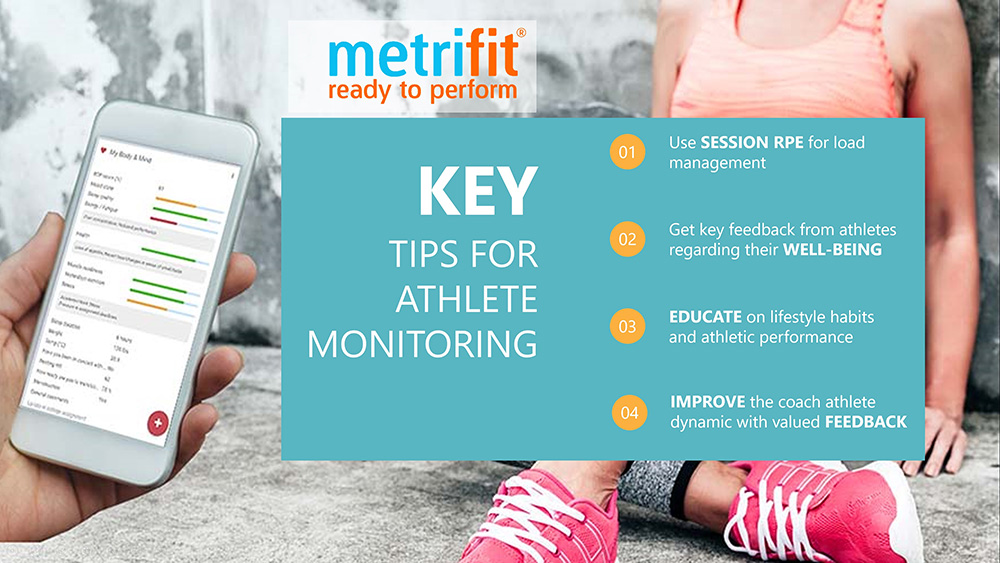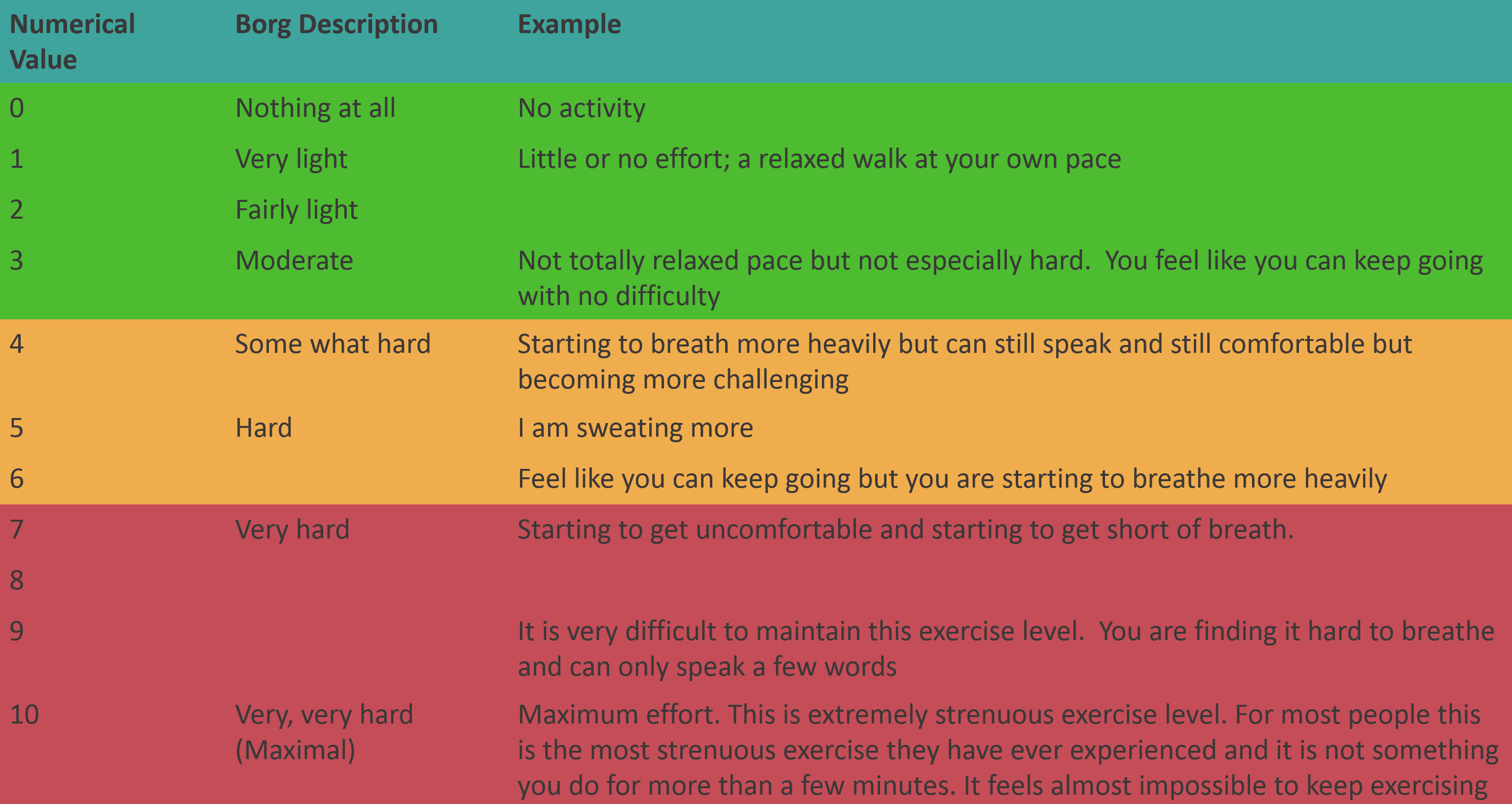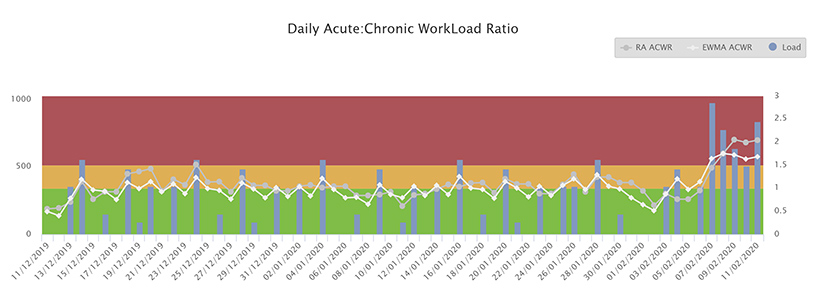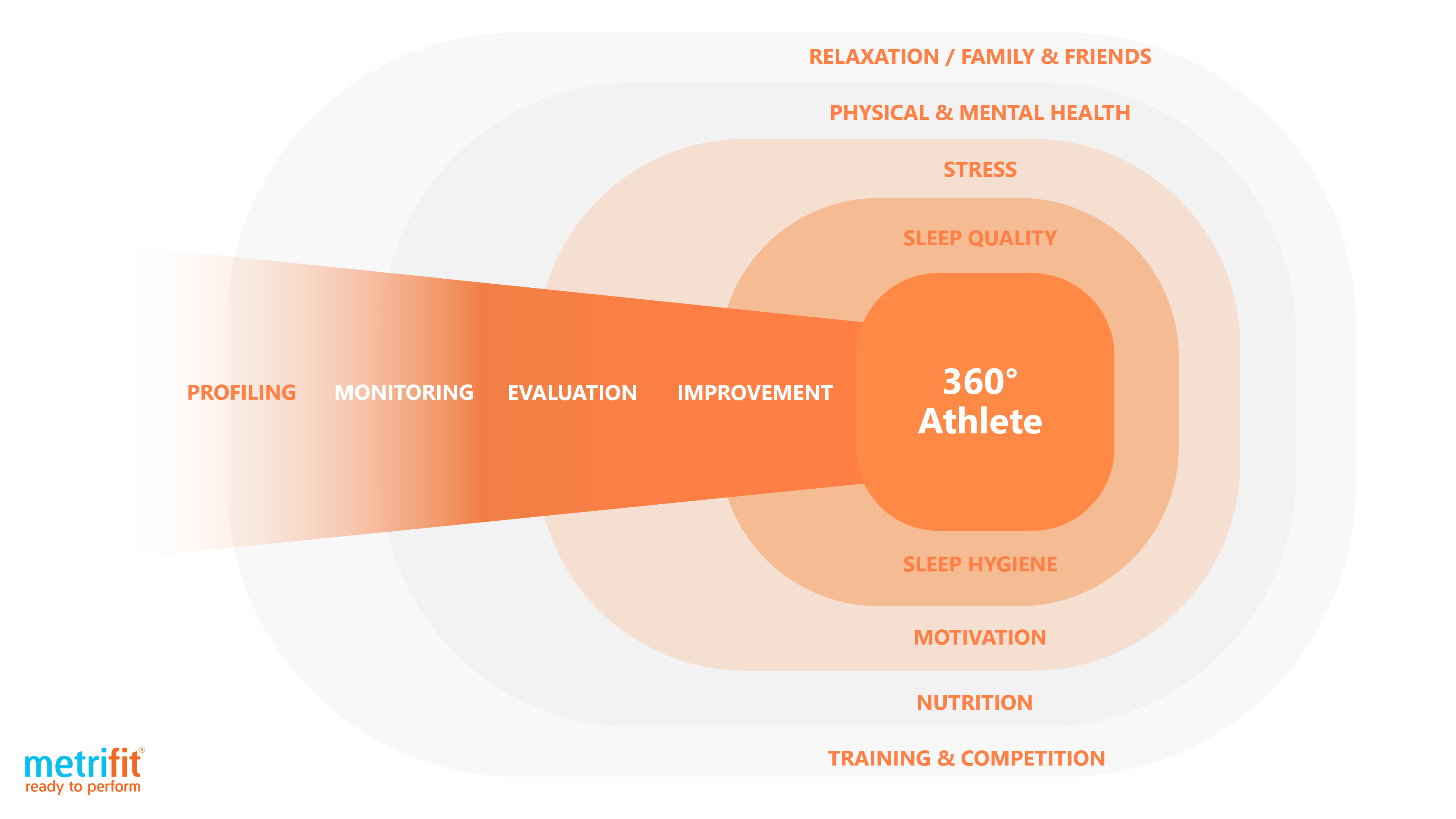4 powerful insights to utilize monitoring to improve performance

Athlete well-being has major implications not only for performance, but for an athlete’s health itself. When it comes to understanding how an athlete is feeling and coping, subjective monitoring can often provide superior sensitivity relative to objective measures. Daily well-being assessments cater for a better understanding of where an athlete is psychologically. Understanding how your athletes are responding to training is crucial to fine-tune your preparation.
The detection of athletes not coping well and the ability of practitioners to positively influence athlete well-being and/or training load can only begin where athlete monitoring is taking a central role in the preparation process. Share on X
This week we take a look at 4 key components of athlete monitoring that can be used to help you improve team performance.

Session RPE
What is RPE?
The Rate of Perceived Exertion (RPE) scale, designed by Gunnar Borg, is a common method for determining exercise intensity levels. The scale is used extensively in estimating training intensity across a number of sports. It requires the athlete to provide responses after undertaking exercise along with details of training duration. It is often measured on a 1-10 scale with an athlete giving an evaluation on their training exercise ranging from 1 (very, very easy), to 7 (very hard) up to 10 (maximal). The resulting data allows the coach to calculate the training load by multiplying training intensity by duration. The value of this approach has been verified through a number of studies in a variety of sports.

In Quantify your workouts with session RPE, George Beckham states that one of the greatest benefits of Session-RPE is the subjective input:-
Session RPE is a good way to assess the difficulty of a session for a given athlete, because it is a representation of how difficult the session was in the absolute sense, filtered through the perception of the athlete. It’s also a pretty accurate representation of actual work done and the physiological/psychological stress experienced during a training session. The athlete’s perception is really important here – if the athlete is exhausted, an easy session might have a very high RPE, whereas if the athlete was feeling great, that same session might have a lower RPE
Value of consistent monitoring
If you collect session RPE data on a consistent basis, and educate your players and staff on how best to use it, you will have a wealth of information that will allow you to:-
- monitor training loads compared to intended loads and thereby check the implementation of your training program
- detect athletes who are not coping with training
- help prevent over-training and illness
- help ensure that athletes returning from injury are not progressing too quickly
- compute acute chronic workload ratios, strain, monotony and other useful calculations
- use training data to compare with subjective wellness as well as objective measures such as test results and GPS variables (if in use)
- understand the best training methods for individual athletes
- help improve performance
The Session RPE method does not require expensive equipment and can be very useful and practical for coaches and athletic trainers to monitor and control internal load, and to design periodization strategies. Share on X

Athlete Well-Being
You can’t underestimate the importance of physical and mental well-being in athletes. An athlete’s health and motivation to train and compete is fundamental to performance. Sport has many benefits both physically and mentally but care is required to ensure that athlete health and well-being is a priority. If a coach can keep track of how an athlete is reacting to training, how they are sleeping, how they are eating and what their mood or stress levels are, they can make decisions based on that information. Those decisions are often the difference between winning and losing.
A subjective daily wellness questionnaire is the cornerstone of wellness monitoring. It allows you to effectively have virtual conversations with each of your athletes, visualize any issues and act quickly to mitigate problems. Share on X
Monitoring key life stressors allows coaches and staff to educate their athletes on the effects that poor sleep hygiene, stress and anxiety can have on performance and on their health and well-being.
The following key variables have been proved to be significant in evaluating the daily stressors that your athletes face:-
- Sleep – quality and duration
- Energy Levels
- Stress
- Mood State
- Muscle Soreness
- Nutrition and Hydration
- Health
The true value of monitoring can be seen with consistent data – you get to know the normal behavior for an athlete and can be notified of any deviations, making it easier to pinpoint issues at an early stage.
Athlete Lifestyle and Education
Ensuring athletes are fit and healthy from both a physical and mental perspective is essential to allow performances to flourish. As the old adage goes “You can’t manage what you don’t measure”. Like anything you want to monitor, it is important initially to know what your baselines are.
What are your team’s weaknesses and strengths?
How can you educate your athletes and encourage good lifestyle habits that help improve the performance of every athlete on your team?

Multiple lifestyle factors can have a significant effect on athletic performance. Evaluating these is important to help each athlete reach their potential. An athlete who is not sleeping and is suffering from chronic stress is more likely to burnout and dropout than perform their best on the sports field. Early intervention identifying issues and educating athletes on how lifestyle stressors can affect their performance can reap immeasurable rewards.
More detailed surveys can be used initially and periodically to give you an x-ray vision into the lifestyle habits of your team and invaluable insights on how they are affecting performance. The aim is to help educate athletes on how their individual lifestyle habits affect their performance and provide feedback on how to improve in areas that they are struggling with.
Feedback
Feedback is the breakfast of champions – Ken Blanchard
Finally, we can conclude that feedback on performance is something that all athletes crave from management. Communication is key in any coach–athlete relationship. Athletes always want to improve, and feedback from their mentors is a great way of addressing issues in performance. This feedback can be positive or negative in nature, and can come in the form of “1-on-1” meetings, team meetings or video analysis to name but a few. As the coach assumes many different roles (advisor, assessor, councilor, friend, motivator, organizer), it’s imperative that their feedback is constructive and aids athlete performance.
Studies have shown that athletes react positively to coach feedback, for example positive feedback given in a positive manner leads to increased levels in motivation for the athletes. This in turn enhances performance and improves the coach-athlete dynamic.
Athletes thrive on positive messages from management, and feedback establishes a link which allows athletes to improve their game accurately. Share on X
An athlete who completes their self report requirements and has some issues, will lose faith in the monitoring system if no one acts on that data or uses that data to inform their training and decision making processes. It takes time to build a daily habit of logging but clarity of use and proof of benefit will assure buy-in and value.
Contextualizing feedback becomes possible with consistent use - often it is not the data that ends up being the most important thing .. but the more meaningful conversations that are sparked by that data. Share on X
Metrifit is an ideal athlete monitoring solution
Regardless of what monitoring tool or application you decide to use for your athletes and team, it is crucial that you understand why you are monitoring and how you are going to use the data to inform your decision making process. By monitoring key areas, coaches can help manage the 24-hour athlete and have a positive effect on athletic performance.
Successful change is about small steps in the right direction rather than giant leaps forward. Monitoring is key to getting the balance right. Share on X
Metrifit’s approach not only covers the physical requirements of a particular sport but also helps the coach derive the benefits of other factors that have a significant influence on an athlete’s well-being: training, body, nutrition, mind, and sleep. Daily wellness questionnaires and Session RPE are just some of the modules included. Metrifit’s lifestyle profiling is scientifically supported and offers a practical way to assess and improve lifestyle strategy for your team. In this short video, we explain how Metrifit works for both the athlete and the coach.
To find out more contact us at or click on ‘Request Demo’ below.
Follow us on social media where we post regular blogs related to sports, performance and well-being.
Quantify your workouts with session RPE by George Beckham
Monitoring Training load by Aaron Coutts, Lee Wallace and Katie Slattery
Dos and Don’ts for Athlete Wellness Questionnaires by Cody Roberts
Monitoring Athletes – What You Should Know Today by Carl Valle
































 Previous Post
Previous Post Next Post
Next Post





